After the long lockdown pause, Casachiesi restarts with an interesting tour between the Po delta river, Emilia Romagna and Marche.
We wanted to take you to this area, rich in history and natural beauty, a while back and we finally managed.
As it is in our style we want to show you paths less traveled by foreigners where you can experience the authentic feeling of this extraordinary country that is Italy.
So let’s start our journey from the first town that attracted our curiosity: Tresigallo, called “The metaphysic town” and you will soon understand why.
The history of this agricultural town wedged in the countryside of Ferrara (we are 25 km from Ferrara), among endless rows of fruit trees, is linked to the delusions of grandeur of one of its citizens, Edmondo Rossoni, who in the 1930s planned its construction.
The economical conditions in the countryside around Ferrara, between the end of the nineteenth century and the first decades of the twentieth century, were of great misery: the lack of work or very low wages pushed the farmworkers of the area to associate in Leagues (inspired by the new socialist theories.)
This is the political and social context in which Edmondo Rossoni gave life to his project.
Rossoni, a former trade unionist, in 1935 became minister of agriculture for Mussolini’s government and on what was an ancient village lost in the fields, he started the construction of an ideal city, unique of its kind, with industrial and functional characteristics ”.
The construction works were carried out in an almost clandestine way, without the great propaganda clamor involved in the new cities built during the Fascist era.
These were the years in which Mussolini built Littoria, Sabaudia, Pomezia, Aprilia, Guidonia (in Lazio), Mussolina (later Arborea), Carbonia, Fertilia (in Sardinia) urban centers born within the phenomenon of repossession in the large swampy areas.
Tresigallo was not built following the national law, without a master plan or a national competition in which the great names of the coeval architecture masters, such as Petrucci, Mazzoni, or Terragni, participated.
In Tresigallo houses, hospitals, factories, schools, public baths, a theater, a ballroom, and all the necessary services rose from nothing all at the same time.
As you can imagine, because of the era we are talking about, everything was built in a rationalist architectural style: clean geometric shapes, mono or two-tones colored facades, decorations reduced to a minimum, search for symmetry and simplicity.
As far as I’m concerned, a visual blunder !!!
Visiting the city in August, on a merciless sunny day, I had a Miami Art Deco déjà vu imaginary but with a more intimate and homey atmosphere: the slightly faded pastel-colored constructions stood out against the intense blue sky, the deserted streets seemed almost abandoned in the summer heat and in the distance, you could hear the voice of a radio escaping from the lowered shutters of an apparently empty house.
Between Ferrara and Tresigallo, their squares and their arcades, towers, and chimneys, all the metaphysical aesthetics are played out. Silence, emptiness, colors and geometry, enigmatic presences, and evocative objects: yes, we are describing the inspiring environment that Giorgio de Chirico, one of the most famous Italian Metaphysics creator and painter, picked to picture his vision.
Going back to the history of Tresigallo, the town became a construction site, in which citizens and foreign workers in search of occupation collaborated together.
Within five years, Tresigallo was transformed into a “metropolis” of 9000 inhabitants. Rossini’s intentions were to make inTresigallo a citadel of technicians built by technicians and workers with a generating core: the factory, an agro-industrial center on a regional scale.
The industrial production was meant to involve many different raw materials: from sugar beets, milk, fruits, and hemp (at that time Italy produced excellent quality hemp, a production that unfortunately was completely abandoned in the 1950s due to the introduction of new material on the market: plastic! But this, unfortunately, is a whole other story.)
In 1939, the construction of the whole settlement was almost completed but, in October, Rossoni was relieved from his Minister due to numerous accusations. The situation worsened when Italian entering in the war in 1940, which caused the definitive closure of the works in Tresigallo.End of the story!
After the war, Edmondo Rossoni as a component of the Fascist dictatorship left the county and lived in Canada until the amnesty allowed him to come back.
In the main square, which is called Piazza della Rivoluzione and is located along the urban axis that connects the Cemetery (place of memory) to the industrial area (place of work), we met Mr. Renzo Poletti, a 92 years old gentleman who showed us a number of black and white pictures and explained us his vision of Edmondo Rossini’s project.
On one side he seemed very proud of living in his “model city” on the other hand he suggested how its founder was a kind of modern pirate: he used his socialist ideal of a modern and equanimous productive paradise to make money and run away.
Fortunately, after many years of neglect in the last twelve years, about thirty million euros have arrived from the European Union for the renovation of Tresigallo’s rationalist buildings.
95% of the buildings of the time are still present today, giving the visitor the opportunity to observe an almost hundred years old urban project in its original organization.
So our advice is to make a small detour from your itinerary if you are in the area and dedicate a couple of hours to visit this poetic little town that will leave you with a very special memory.
Betti
How to get to Tresigallo:
[socialWarfare]

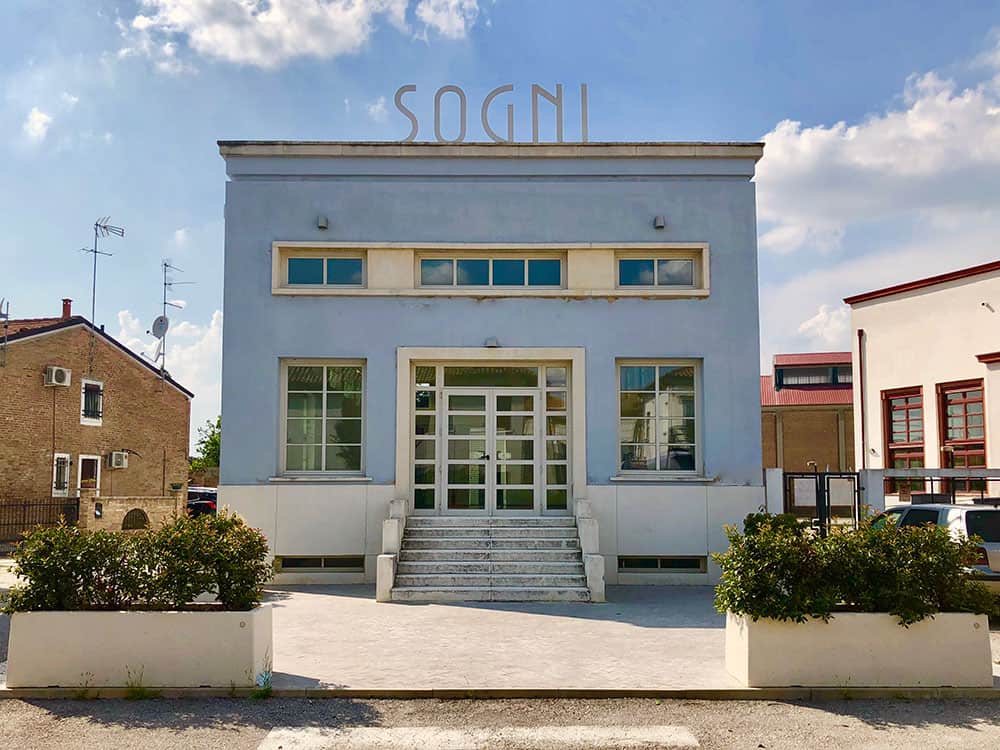
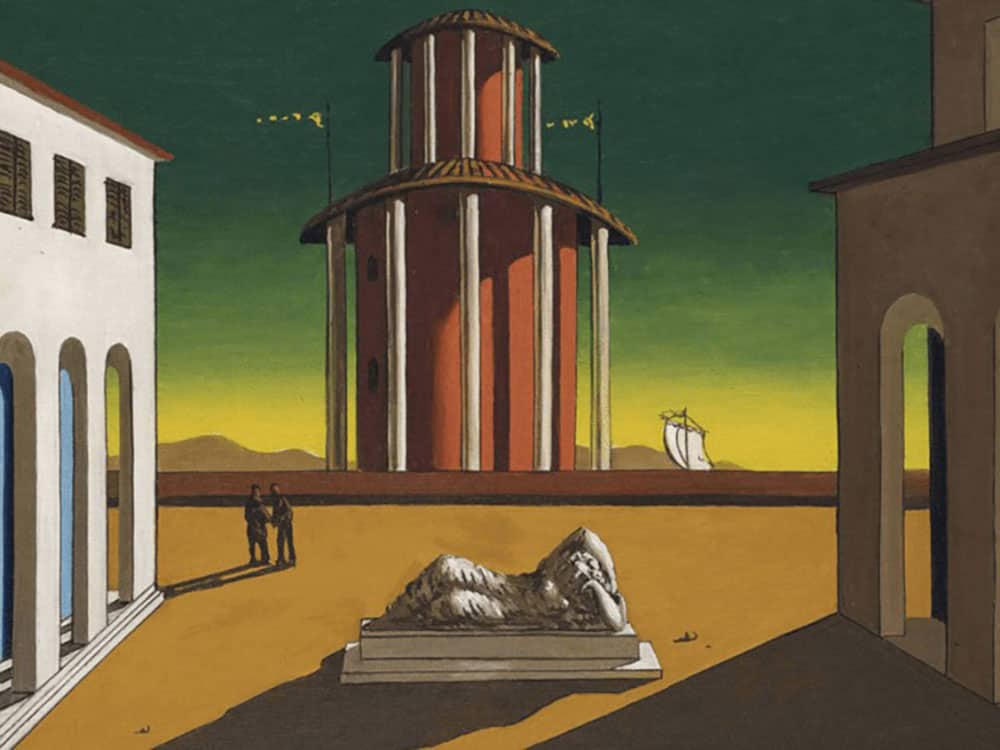
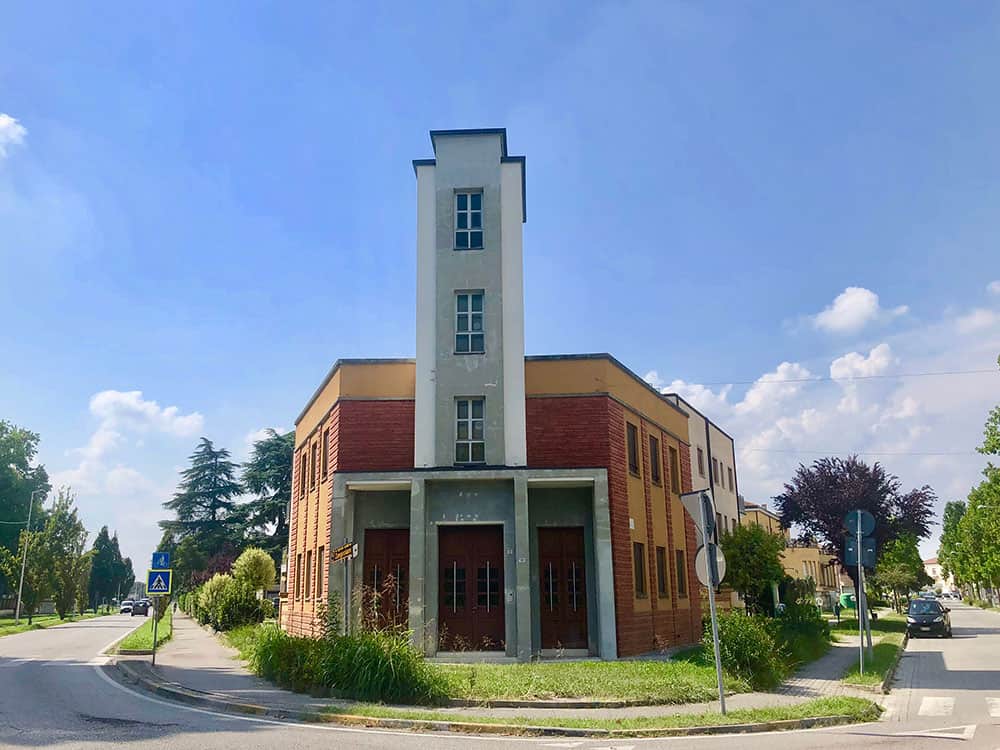
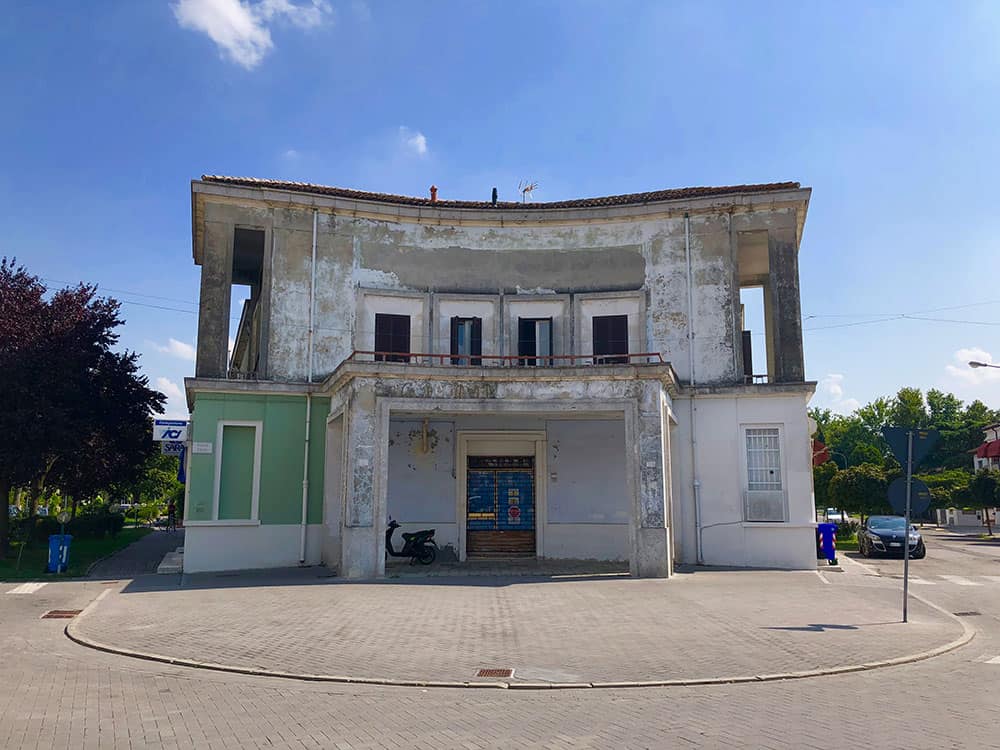
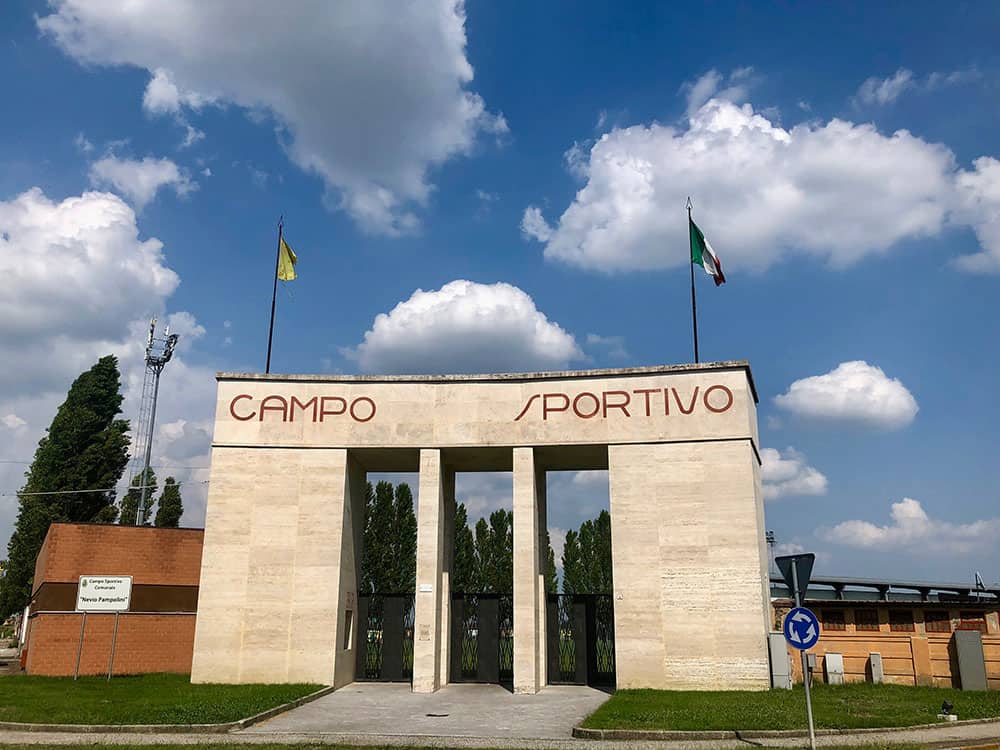
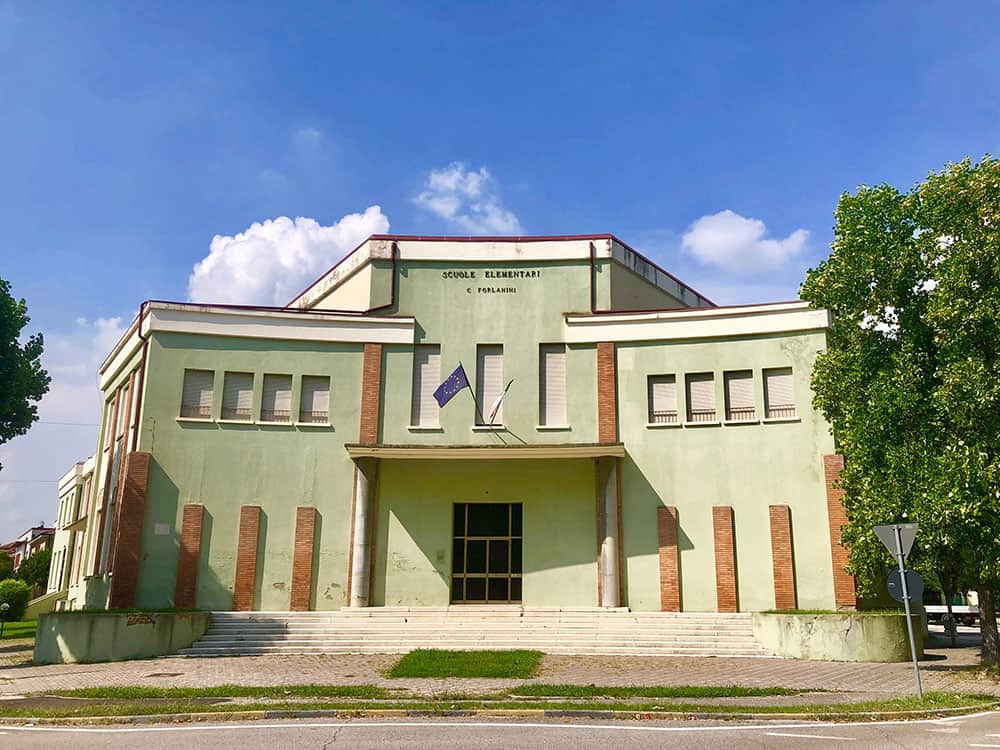
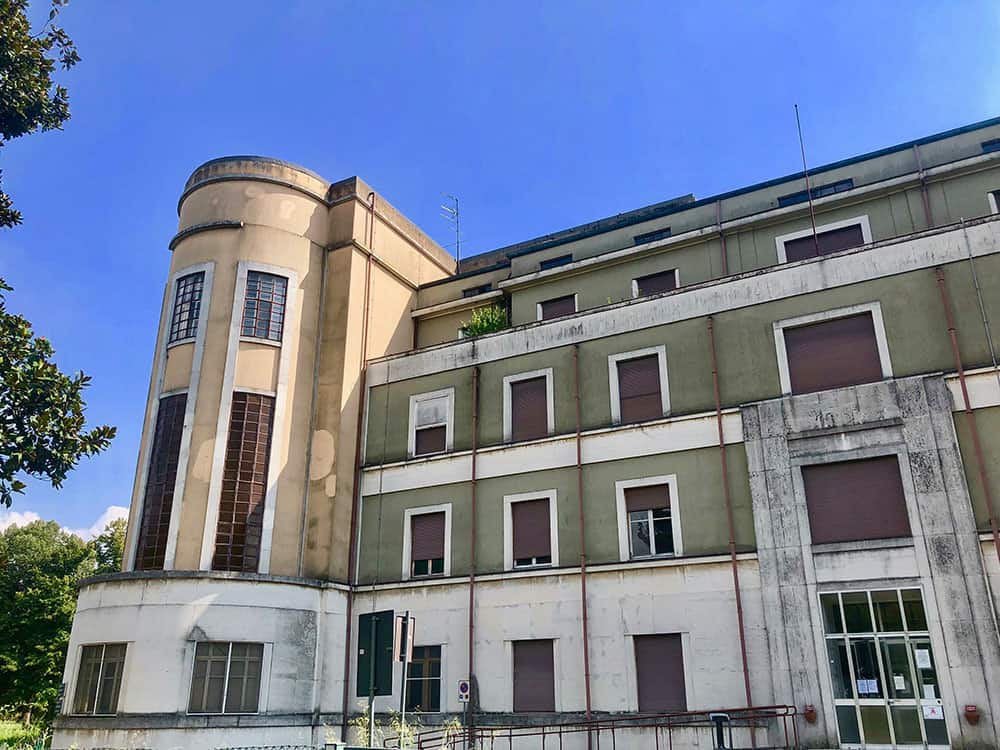
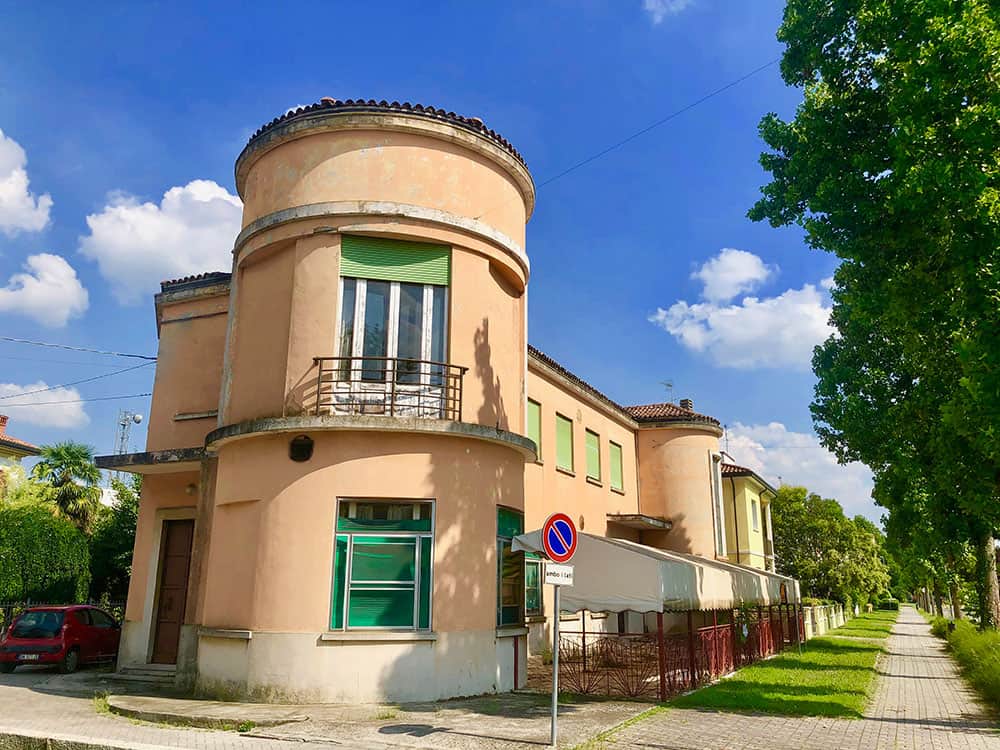
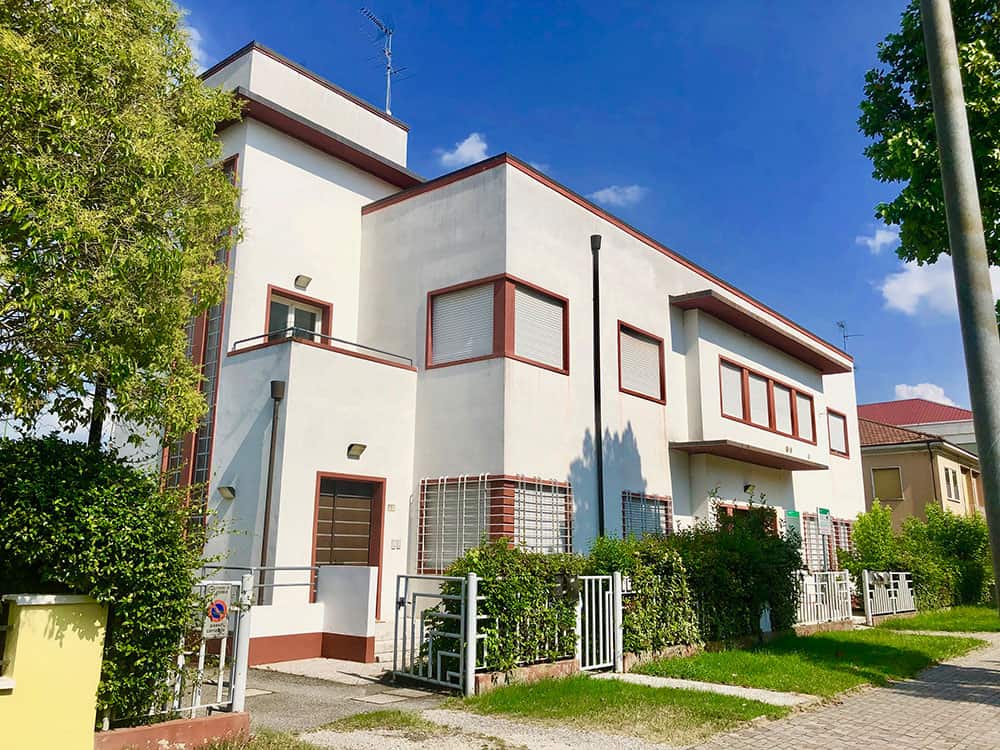
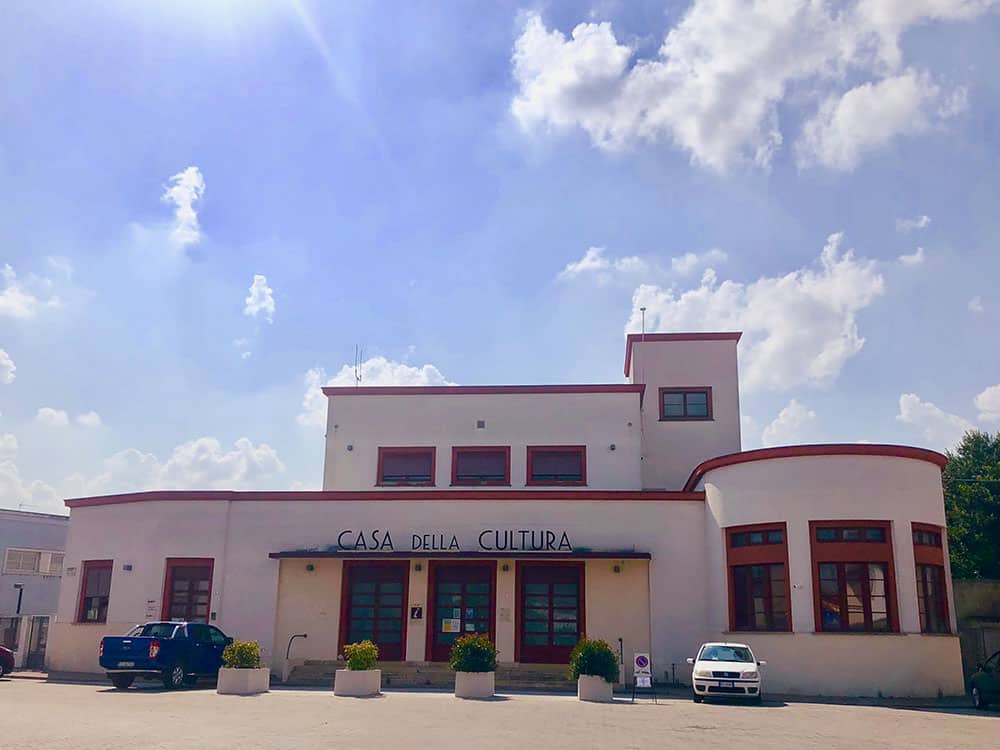
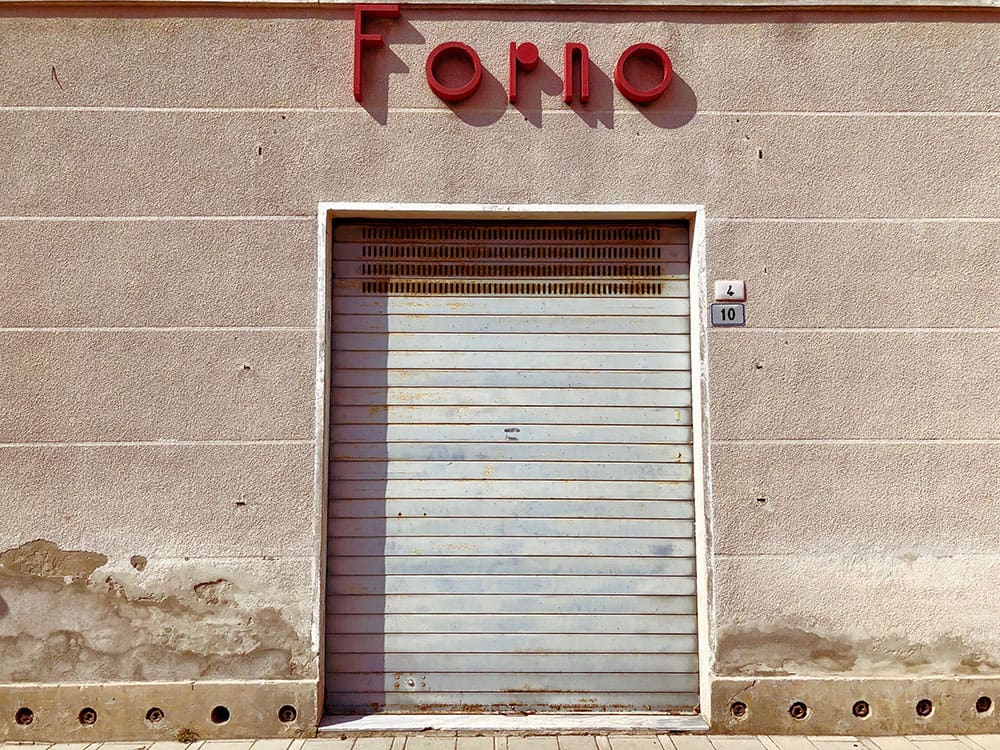
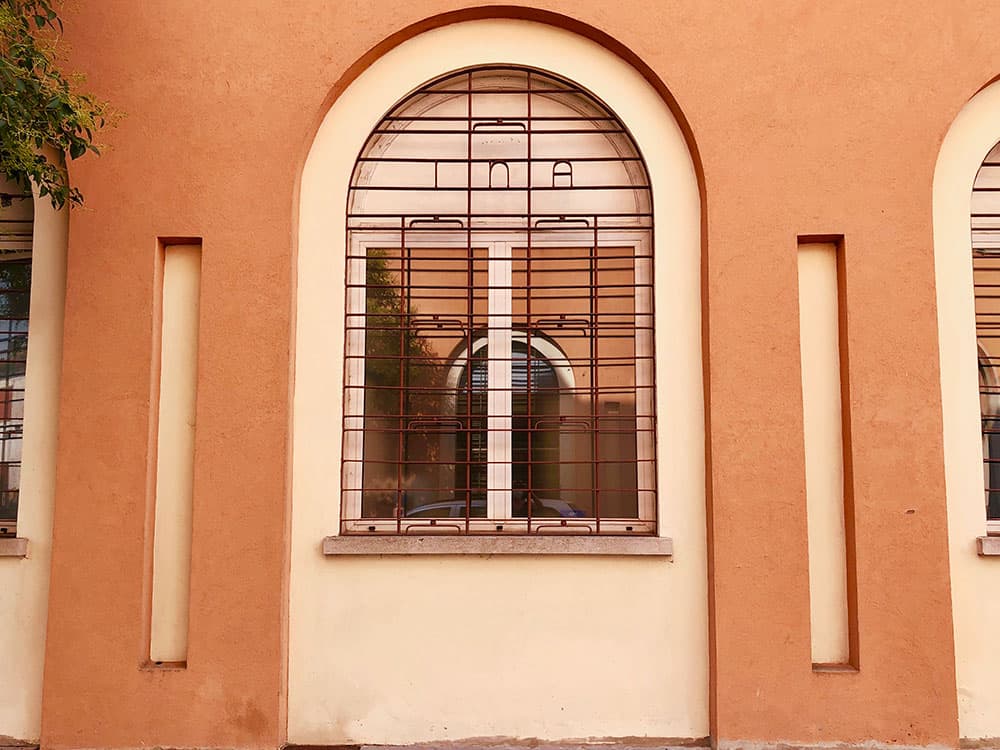
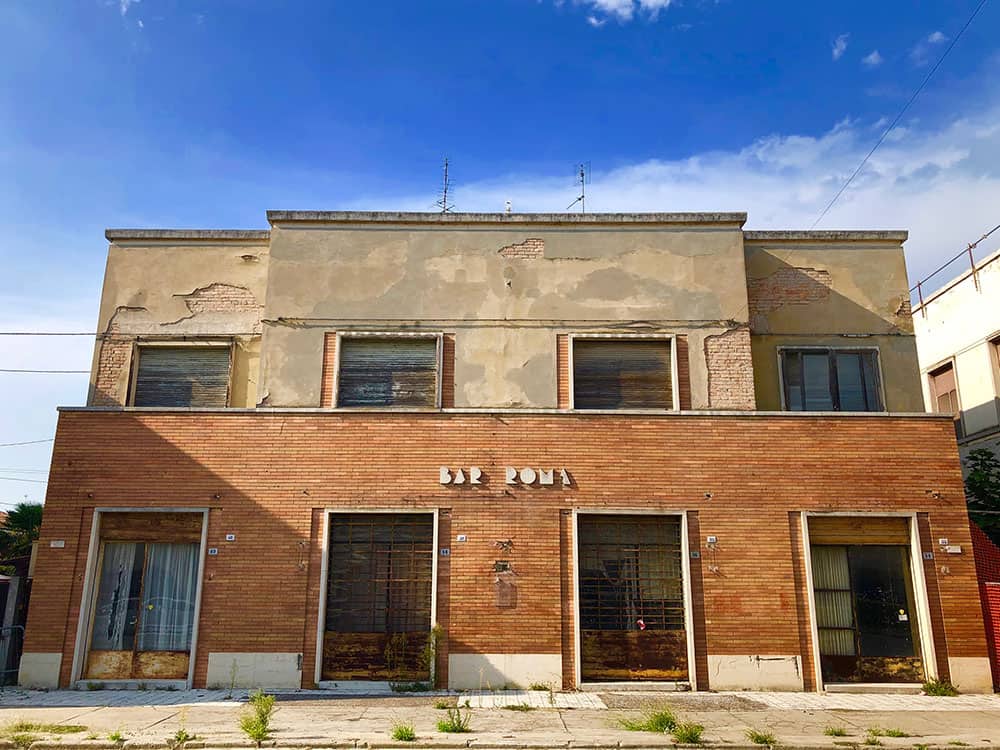
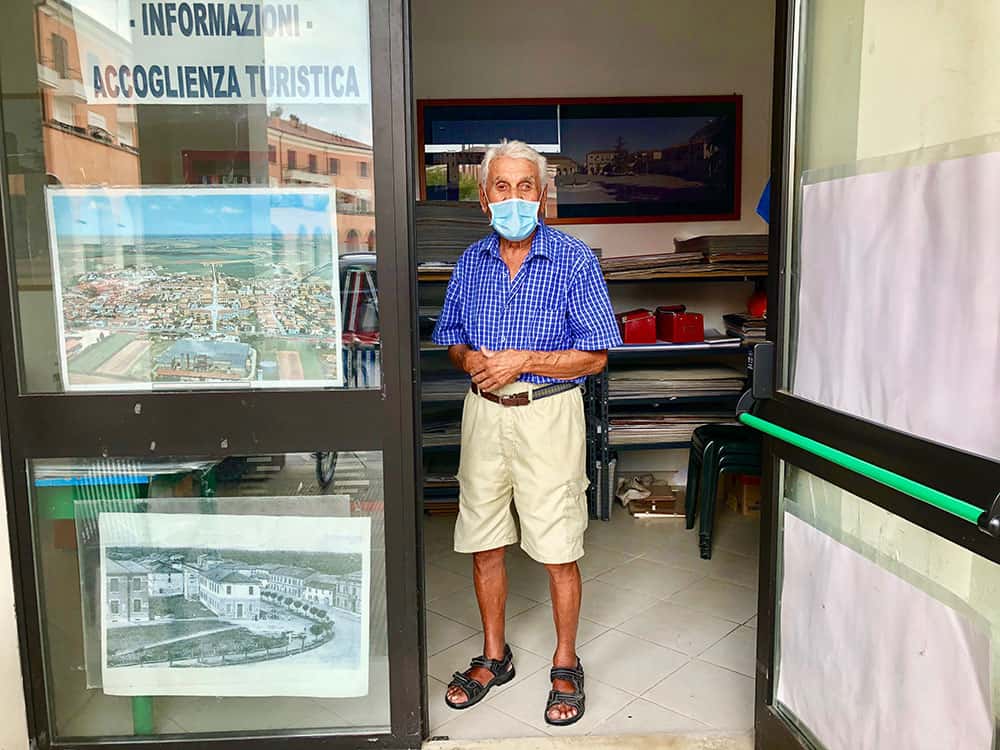
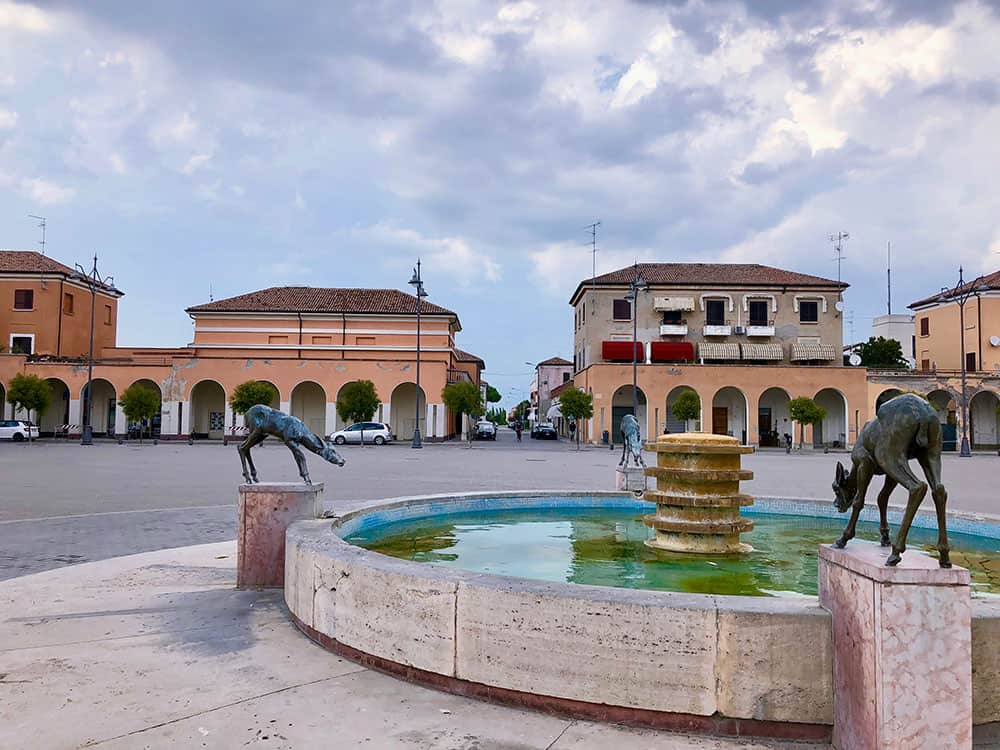
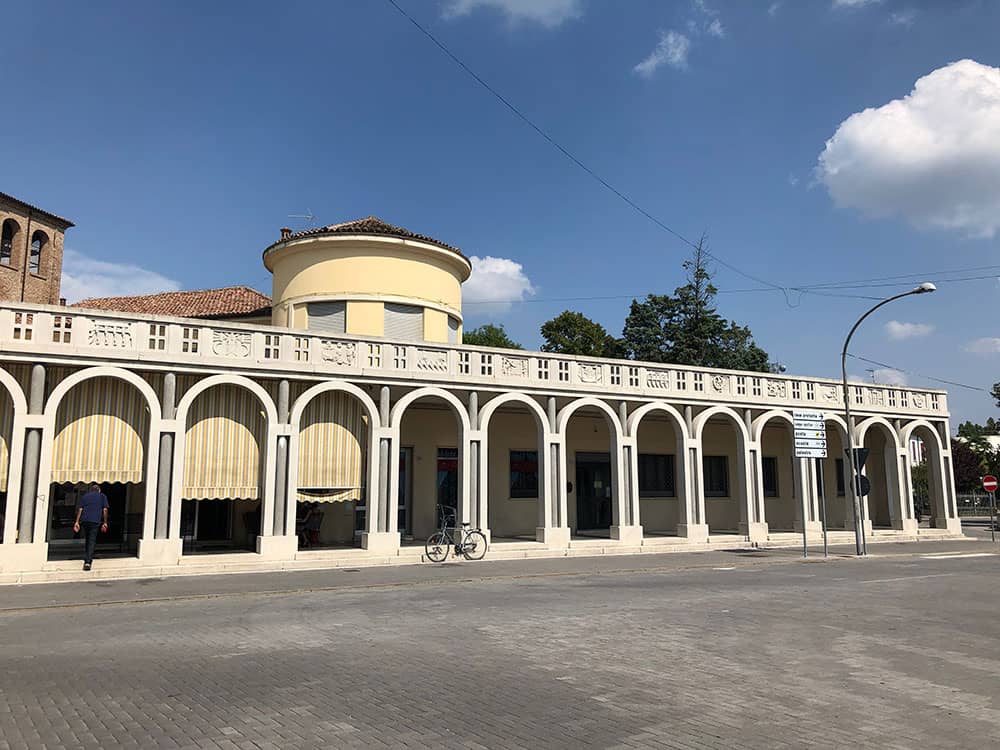
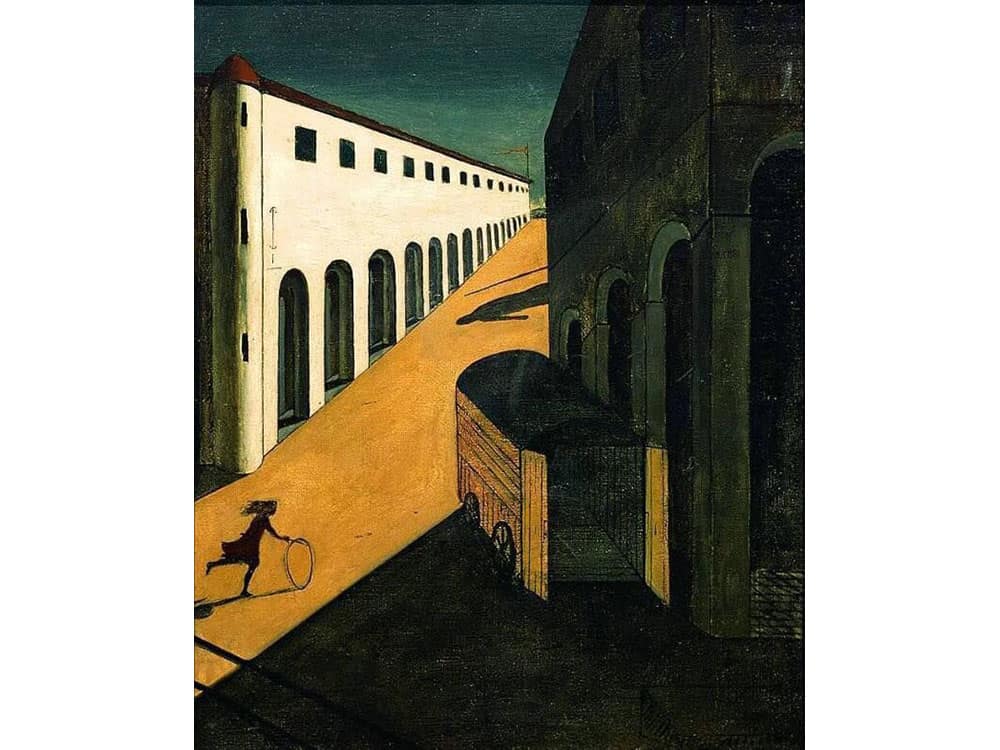
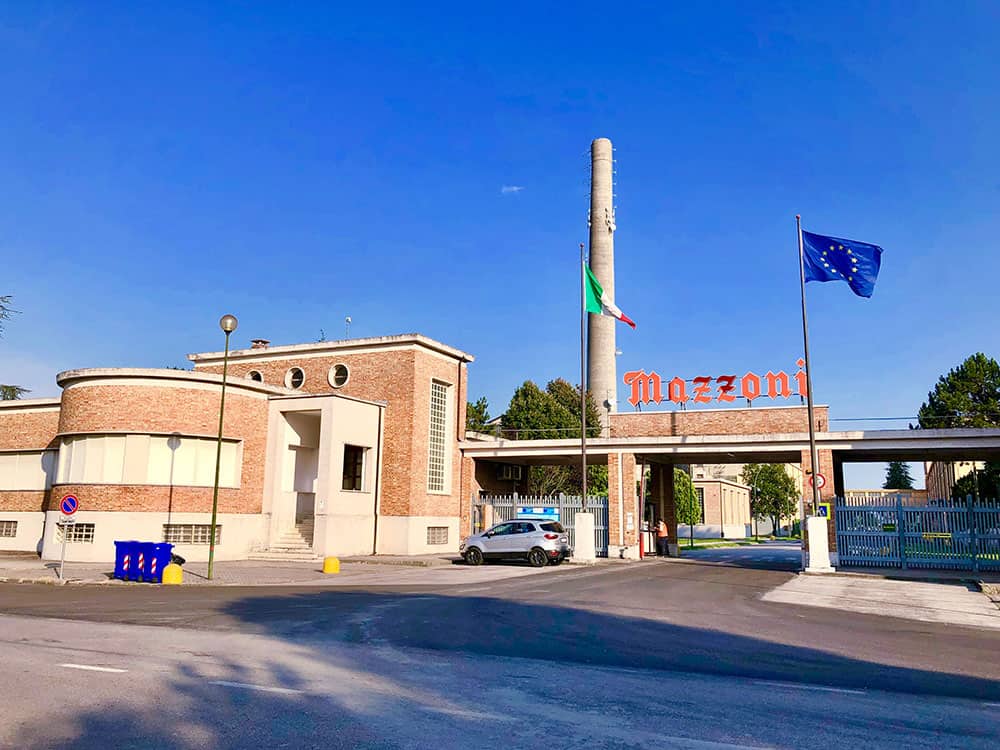
2 Comments
Joanna martin
May 5, 2021I went to Tresigallo next Sunday. The atmosphere was fantastic, I live in Rovigo and I saud to everyone to go there, don’t miss it. Do you know something about the house “Sogni” thank you!!
casachiesi
May 5, 2021Hi! It is such a magical town and so close to Ferrara which I also imagined that you visited. The “Sogni” house use to be old public baths of the town. A lovely man at the make shift tourist office filled us in on the whole story behind this fascinating town. If you like the additional articles on our site please feel free to sign up to our Newsletter or I can add you in. Grazie!